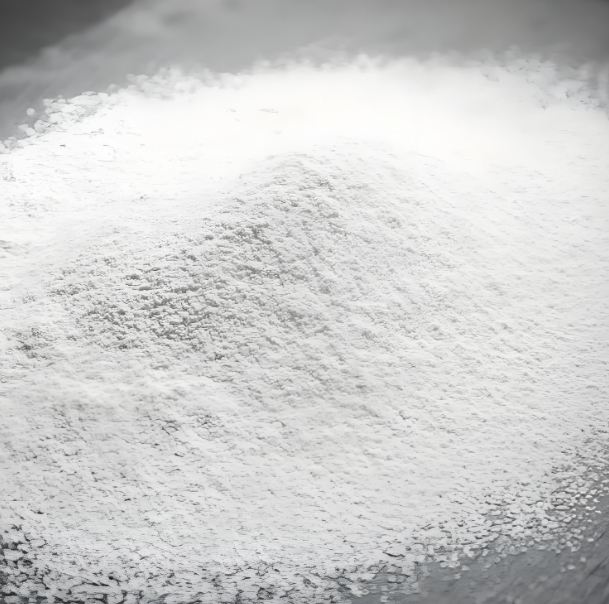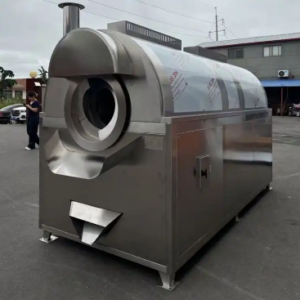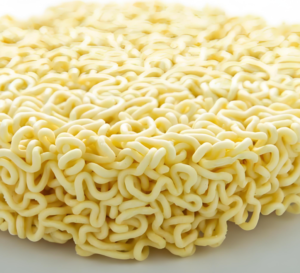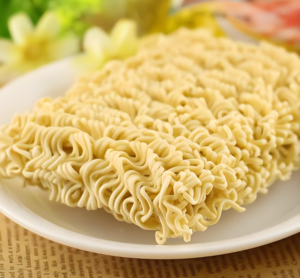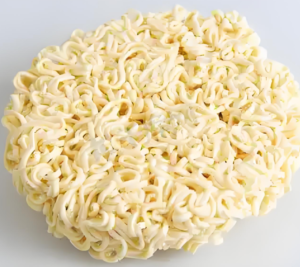modified starch making machine
ToggleProduction of Modified Starch: Methods, Processes, and Applications
Modified starch, also known as starch derivative or altered starch, is produced by physically, chemically, or enzymatically treating native starch to enhance or alter its properties for specific industrial applications. This comprehensive guide explores the various production methods of modified starch, including detailed processes, advantages and disadvantages of each technique, equipment requirements, environmental considerations, and diverse industrial applications.
1. Introduction to Modified Starch
Modified starch refers to starch that has been treated to change its inherent characteristics, making it more suitable for particular industrial needs. Native starch, while abundant and inexpensive, often lacks the stability, solubility, or functional properties required for many modern applications. Through modification processes, starch can acquire improved thermal stability, better viscosity control, enhanced freeze-thaw stability, and increased resistance to shear, acid, or heat.
The modification of starch serves several purposes:
- Improving processing performance (e.g., easier handling during manufacturing)
- Enhancing product texture and mouthfeel in food applications
- Increasing stability during storage and transportation
- Providing specific functional properties like emulsification or film-forming abilities
- Creating starch derivatives with entirely new characteristics not found in native starch
The global modified starch market continues to grow, driven by demand from food, pharmaceutical, paper, textile, and other industries. Understanding the production methods is essential for manufacturers to select the appropriate modification technique based on desired properties, cost considerations, and environmental impact.
2. Physical Modification Methods
Physical modification of starch involves using mechanical or thermal energy to alter starch structure without introducing chemical reagents. These methods are generally considered more environmentally friendly as they don’t involve chemical additives or generate significant waste streams.
2.1 Heat Treatment (Pregelatinization)
Principle:
Heat treatment is among the most common physical modification methods where starch undergoes gelatinization – the process where starch granules swell and lose their crystalline structure when heated in water. This treatment makes the starch cold-water soluble.
Process Flow:
- Starch pretreatment: Selection of appropriate starch raw material (corn, potato, tapioca), followed by cleaning and drying.
- Heating treatment: The starch is mixed with water and heated to specific temperatures (typically 60-100°C) to induce gelatinization.
- Cooling and drying: The gelatinized starch is cooled and dried to obtain the modified starch product.
Advantages:
- Simple operation and low cost
- Environmentally friendly with no chemical residues
- Produces instant starch that dissolves in cold water
Disadvantages:
- Modified starch properties may be unstable
- Limited range of property modifications achievable
2.2 High-Pressure Processing
Principle:
High-pressure processing modifies starch by applying extreme pressure (typically 100-1000 MPa) which disrupts the crystalline regions of starch granules, altering their physical properties without using heat or chemicals.
Process Flow:
- Starch pretreatment: Starch is dissolved in water to form a suspension.
- High-pressure treatment: The starch solution undergoes pressure treatment for several minutes to hours.
- Cooling and drying: After pressure treatment, the starch is cooled and dried.
Advantages:
- Significantly alters physical properties like gelatinization temperature and viscosity
- Preserves nutritional components better than thermal treatments
- No chemical residues
Disadvantages:
- High equipment investment costs
- Energy-intensive process
2.3 Microwave Radiation
Principle:
Microwave treatment uses electromagnetic radiation to rapidly heat starch-water mixtures, causing gelatinization through dielectric heating. The rapid and uniform heating characteristics make this method efficient.
Process Flow:
- Starch pretreatment: Starch is mixed with water to appropriate concentration.
- Microwave heating: The starch slurry is subjected to microwave radiation for several minutes.
- Cooling and drying: The treated starch is cooled and dried.
Advantages:
- Rapid heating reduces processing time
- Lower energy consumption compared to conventional heating
- Uniform treatment when properly controlled
Disadvantages:
- High equipment costs
- Requires precise control to ensure uniform treatment
3. Chemical Modification Methods
Chemical modification involves introducing new functional groups to starch molecules through chemical reactions, significantly expanding the range of possible property modifications. These methods allow precise control over starch functionality but require careful handling of chemicals and byproducts.
3.1 Acid Treatment
Principle:
Acid treatment hydrolyzes starch molecules by breaking α-1,4 and α-1,6 glycosidic bonds, reducing molecular weight and altering properties like viscosity and solubility. Common acids used include hydrochloric acid and sulfuric acid.
Process Flow:
- Starch pretreatment: Selection of suitable starch raw material dissolved in water.
- Acid treatment: Addition of acid (typically 1-3% concentration) at controlled temperature (usually 40-60°C) for several hours.
- Neutralization and washing: After achieving desired modification, the acid is neutralized (often with sodium hydroxide) and the starch washed to remove residues.
- Drying: The modified starch is dried to appropriate moisture content.
Advantages:
- Significantly alters starch properties like viscosity and stability
- Relatively simple operation
- Cost-effective for certain applications
Disadvantages:
- Potential acid residues in final product
- May affect nutritional components of starch
- Requires careful pH control and neutralization steps
3.2 Oxidation
Principle:
Oxidation introduces carboxyl and carbonyl groups into starch molecules using oxidants like sodium hypochlorite, hydrogen peroxide, or periodic acid. This modification improves clarity, stability, and reduces gelatinization temperature.
Process Flow (using sodium hypochlorite):
- Prepare starch slurry (30-40% solids) in water
- Adjust pH to 8-10 with sodium hydroxide
- Add sodium hypochlorite solution (typically 1-2% active chlorine based on starch weight)
- Maintain temperature at 30-50°C for several hours
- Neutralize with acid (hydrochloric or sulfuric acid)
- Wash, centrifuge, and dry the oxidized starch
Advantages:
- Improves whiteness and stability of starch
- Creates starch with lower gelatinization temperature
- Process is relatively mild compared to some chemical modifications
Disadvantages:
- Potential formation of oxidation byproducts
- Requires corrosion-resistant equipment
- Need to control residual oxidant levels
3.3 Esterification and Etherification
These methods introduce ester or ether groups to starch molecules, profoundly changing their properties:
Acetylation (Esterification):
- Uses acetic anhydride or vinyl acetate as reagent
- Introduces acetyl groups (-COCH₃)
- Improves stability, clarity, and reduces retrogradation
- Typical DS (degree of substitution) of 0.01-0.2 for food applications
Hydroxypropylation (Etherification):
- Uses propylene oxide as reagent
- Introduces hydroxypropyl groups (-CH₂CHOHCH₃)
- Improves freeze-thaw stability and clarity
- Creates starch with improved texture and mouthfeel
Process Flow (for acetylation):
- Prepare starch slurry (30-40% solids)
- Adjust pH to 7-11 with alkali
- Add acetic anhydride (typically 1-10% based on starch weight)
- React at 20-50°C for 0.5-6 hours
- Neutralize, wash, and dry the product
4. Enzymatic Modification Methods
Enzymatic modification uses specific enzymes to selectively modify starch molecules under mild conditions. These methods are gaining popularity due to their specificity and environmentally friendly nature.
4.1 α-Amylase Treatment
Principle:
α-Amylase randomly hydrolyzes α-1,4 glycosidic bonds in starch molecules, producing shorter chain dextrins and reducing viscosity.
Process Flow:
- Starch pretreatment: Starch is dissolved in water to appropriate concentration.
- Enzyme treatment: α-Amylase is added at optimal temperature (typically 60-90°C) and pH (5.5-7.0).
- Enzyme deactivation: The reaction is stopped by heat treatment or pH adjustment.
- Drying: The modified starch is dried.
Advantages:
- Highly specific reaction
- Mild processing conditions
- No chemical residues
- Can create specific molecular weight distributions
Disadvantages:
- Higher enzyme costs
- Requires precise control of reaction conditions
- Potential need for enzyme removal steps
4.2 Transglucosidase Treatment
Principle:
Transglucosidase rearranges starch molecules by cleaving and reforming glycosidic bonds, creating branched structures that resist retrogradation.
Applications:
- Production of resistant starch
- Creation of slowly digestible starch for nutritional applications
- Improving freeze-thaw stability
5. Production Processes and Equipment
The production of modified starch can be categorized into wet, dry, and semi-dry processes, each with distinct advantages and suitable applications.
5.1 Wet Process (Slurry Process)
Description:
The most common method where starch is suspended in water (typically 30-45% solids) and modified under controlled conditions. After modification, the starch is washed, dewatered, and dried.
Key Equipment:
- Reaction tanks: Stainless steel or glass-lined, with agitation and temperature control
- Heat exchangers: For temperature adjustment
- Centrifuges or filters: For dewatering
- Dryers: Flash, spray, or oven dryers
- Milling and sieving equipment: For final product sizing
Advantages:
- Suitable for most modification types
- Good control over reaction conditions
- Uniform product quality
- Can produce wide range of modified starches
Disadvantages:
- High water usage
- Generates wastewater requiring treatment
- Multiple processing steps increase energy use
5.2 Dry Process
Description:
Starch is mixed with small amounts of reagents (typically <5% moisture) and reacted under controlled temperature and humidity without slurry formation.
Key Equipment:
- High-intensity mixers: For uniform reagent distribution
- Reaction extruders or heated vessels: For carrying out modification
- Conditioning bins: For reaction completion
- Cooling and packaging systems
Advantages:
- Minimal water usage
- No wastewater generation
- Higher product yield (no wash losses)
- Lower energy requirements
Disadvantages:
- Limited to certain modification types
- Challenges in achieving uniform reaction
- Higher equipment costs for some modifications
5.3 Semi-Dry Process
Description:
A hybrid approach where starch is moistened with reagent solution (typically 10-30% moisture), reacted, then dried. Combines aspects of both wet and dry processes.
Applications:
- Certain esterifications
- Some cross-linking modifications
- When limited reagent penetration is acceptable
6. Environmental Considerations and Sustainable Production
As environmental concerns grow, the modified starch industry faces challenges in reducing its ecological footprint. Key issues include resource consumption, chemical waste, energy use, and water management.
6.1 Environmental Impacts
Resource Consumption:
- Large quantities of raw materials (corn, potato, tapioca)
- Significant energy requirements, especially for drying
- Water usage in wet processes
Chemical Waste:
- Acid, alkali, and oxidant residues in wastewater
- Organic solvents in some processes
- Byproducts from chemical reactions
Energy Consumption:
- Thermal processes require substantial energy
- Drying is particularly energy-intensive
- Contributes to greenhouse gas emissions
6.2 Sustainable Production Approaches
Green Production Technologies:
- Use of renewable energy sources (solar, wind)
- Adoption of low-temperature processes
- Implementation of enzyme-based modifications
Waste Reduction Strategies:
- Recycling of process water
- Recovery and reuse of chemicals
- Conversion of byproducts to valuable coproducts
Eco-friendly Additives:
- Replacement of harsh chemicals with milder alternatives
- Use of biodegradable reagents
- Development of cleaner catalytic systems
Water Conservation:
- Closed-loop water systems
- Advanced filtration for water reuse
- Optimization of washing steps
7. Quality Control and Product Specifications
Ensuring consistent quality is critical in modified starch production. Key quality parameters include:
7.1 Physical Properties
- Moisture content (typically <15%)
- Particle size and distribution
- Color and appearance
- Bulk density
7.2 Functional Properties
- Viscosity profile (Brabender or Rapid Visco Analyzer)
- Gelatinization temperature

